
Prep 10 mins Cook & Wait 3 1/2 hours Ready 3:40
Don’t throw away those turkey bones. Those turkey bones or chicken bones and giblets that are headed for the trash can are valuable stuff. They will be a winter lifesaver for making quick soups and stews during a long hard winter! Yes, unlike our grandmothers, we have chicken stock in cans and shelf stable containers. Better yet one of my favorite products that is always in my kitchen is Better than Bouillion bases in chicken, beef, vegetable and lobster flavors, which take up less storage space since you mix with water. But home made stock – sorry nothing can compare.
Having stock on hand is golden when you are making soups, stews or sauces. When I attended culinary school, learning to make stock was one of the first classes we were required to take, right after Knife Skills. It has served me well over the years, because it is the basis of what all good savory things come from. A wintery evening on the couch is the perfect time to make stock, because all it requires is time to simmer on the cooktop. Here’s all you have to do.

Turkey Bones and water
First, save your bones and giblets from a roast turkey, roast chicken, that rotisserie chicken you bought at Costco, you get the idea. If you don’t have time to make stock today, wrap up your bones and put them in the freezer. On Thanksgiving weekend I had a “stock night”, I pulled out the chicken bones & giblets I had put in the freezer over the last few months and put them in one pot and had another pot with the turkey carcass. Use a stock pot or a large spaghetti type pot.

Mirepoix-onion, celery, carrot + parsley & thyme stems, peppercorns, whole cloves. Bay leaf (missing)
Second, to each pot, add your mirepoix (this is a fancy French name for onions, celery and carrots). Mirepoix is the second most important contributor to flavor in your stock and P.S. if you want to make vegetable stock, just leave out the bones and follow along. Generally, the ratio of onions to celery and carrots is 2:1. (example: 2 cups onion, 1 cup celery, 1 cup carrots). It doesn’t matter how well you can slice and dice, as these will end up in the trash ultimately. The next level of flavor you add is herbs and spices – thyme, parsley stems, bay leaf, peppercorns, whole cloves. DO NOT ADD SALT. When you make your soup or sauce, you will add the salt and be able to control it then.
Third, add water. Add enough water to cover the ingredients + more to within an inch of the rim and bring to a boil. A word about water – since your stock will be cooking for 3 hours (1 hour for a vegetable stock), some will evaporate, so add enough water in the beginning so that your ingredients will be under water at the end of the process. If necessary, add more water during the process. Do not cover the pot.
Fourth, once the ingredients come to a boil, turn the heat to low or simmer and go watch a good movie. Grab some popcorn and a beer or a nice slice of pie and wait for the aroma of chicken soup to waft into your space!
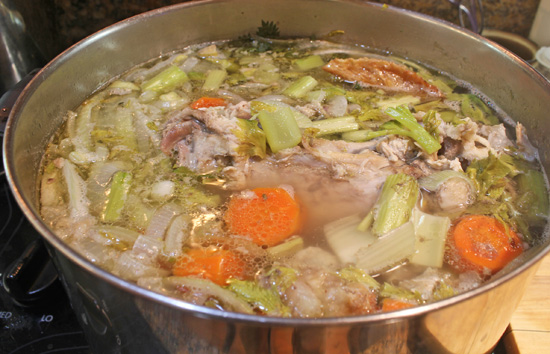
Stock is underway. Skim off any scum off the surface.
When you wander into the kitchen to grab another cocktail or cookie, you can skim off any scum that appears on the surface. Sometimes there is none. Otherwise, you just let it sit there for about 3 hours (1 hour for vegetable stock) while you enjoy your evening.
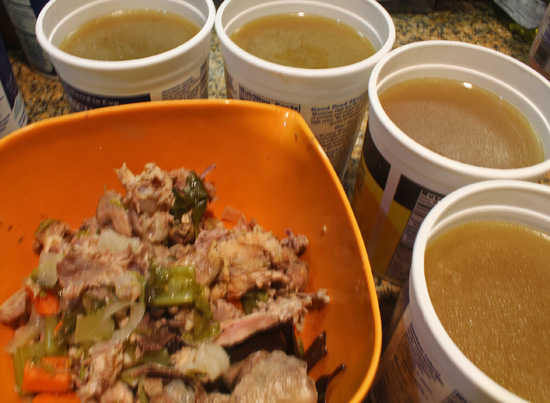
Solids are strained out while pouring liquid into containers.
After 3 hours (1 hour for vegetable stock), turn off the heat and let the pot cool. When it is cool enough to handle, strain the contents and place your freshly made stock into containers destined for the freezer. I like to reuse quart yogurt containers that fit well into the freezer and are the right amount for a typical soup recipe.

Beautiful aromatic fresh stock ready for the freezer.
When you use your stock, just thaw it partially on the counter or in the microwave and drop the frozen block right into your pot of soup…and don’t forget to add salt to taste. Most recipes account for the salt found in canned stocks. Now you get to control the saltiness, but don’t leave it out completely or the taste will be bland. The finest restaurants all use fresh made stock in their soups and sauces and this is what makes the difference between ordinary and extraordinary. Enjoy!
Click here for 11 delicious Soup recipes.
Print Turkey/Chicken Stock Recipe
Turkey/Chicken Stock or Vegetable Stock
- 1 turkey or chicken carcass and bones (Leave out for vegetable stock)
- 4 quarts + water
- 1 large large onion, sliced
- 3 large carrots, peeled and cut in 1″ pieces
- 3 celery ribs, cut into 1″ pieces
- 2 parsley stems
- 2 thyme stems or 1 tsp leaves
- 1 bay leaf
- 3 black peppercorns whole
- 2 cloves, whole
1. Place turkey carcass and bones into large stock pot or spaghetti type pot. Add all other ingredients. Add plenty of water to cover ingredients to within an inch from the rim and bring to a boil.
2. Once pot of ingredients boils, turn to low and leave uncovered on the cooktop for about 3 hours. (1 hour for vegetable stock)
3. Skim off any scum that appears on the surface. Sometimes there is none.
4. After about 3 hours (1 hour for vegetable stock), turn off the heat and let the pot just sit there to cool before you touch it.
5. Then after about 1/2 hour, strain the contents and place your freshly made stock into containers destined for the freezer. I like to reuse quart yogurt containers that fit well into the freezer and are the right amount for a typical soup recipe.
6. When you use your stock, just thaw it partially on the counter, refrigerator or in the microwave and drop the frozen block right into your pot of soup…and don’t forget to add salt to taste. Most recipes account for the salt found in canned stocks. Now you get to control the saltiness, but don’t leave it out completely or the taste will be bland.
Servings: 16 cups Yield: 4 quarts 102 calories per serving
Turkey/Chicken Stock or Vegetable Stock
Ingredients
- 1 turkey or chicken carcass and bones Leave out for vegetable stock
- 4 quarts + water
- 1 large large onion sliced
- 3 large carrots peeled and cut in 1" pieces
- 3 celery ribs cut into 1" pieces
- 2 parsley stems
- 2 thyme stems or 1 tsp leaves
- 1 bay leaf
- 3 black peppercorns whole
- 2 cloves whole
Instructions
- Place turkey carcass and bones into large stock pot or spaghetti type pot. Add all other ingredients. Add plenty of water to cover ingredients to within an inch from the rim and bring to a boil.
- Once pot of ingredients boils, turn to low and leave uncovered on the cooktop for about 3 hours. (1 hour for vegetable stock)
- Skim off any scum that appears on the surface. Sometimes there is none.
- After about 3 hours (1 hour for vegetable stock), turn off the heat and let the pot just sit there to cool before you touch it.
- Then after about 1/2 hour, strain the contents and place your freshly made stock into containers destined for the freezer. I like to reuse quart yogurt containers that fit well into the freezer and are the right amount for a typical soup recipe.
- When you use your stock, just thaw it partially on the counter, refrigerator or in the microwave and drop the frozen block right into your pot of soup...and don't forget to add salt to taste. Most recipes account for the salt found in canned stocks. Now you get to control the saltiness, but don't leave it out completely or the taste will be bland.
- ENJOY THIS RECIPE FROM FRESHFOODINAFLASH.COM
Nutrition
Click on the frog for more Soup recipes from the Food Bloggers of Los Angeles

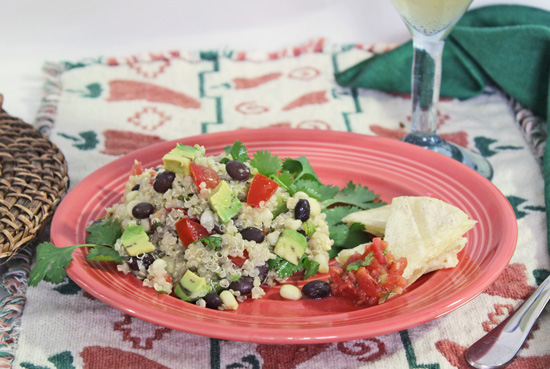
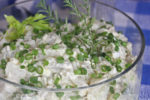


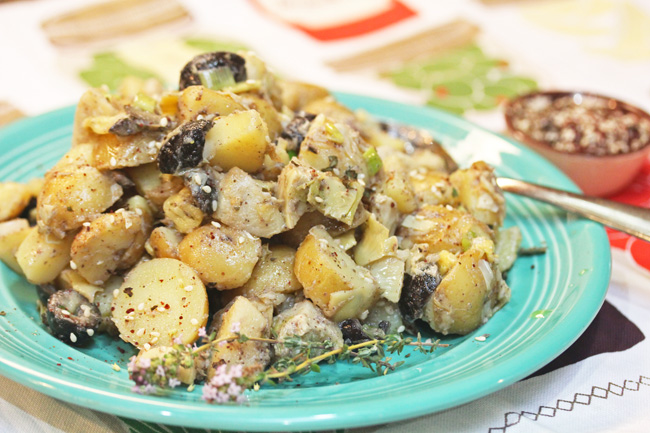
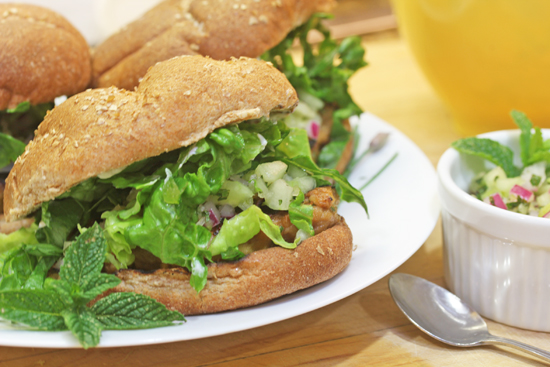


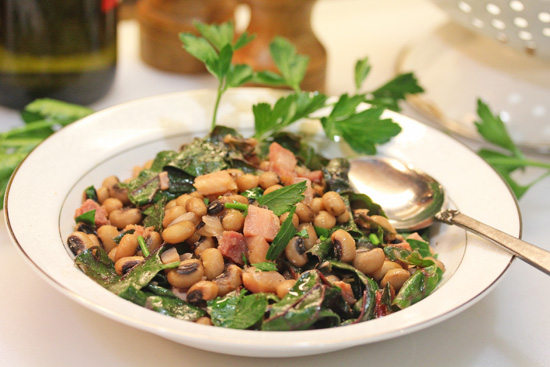
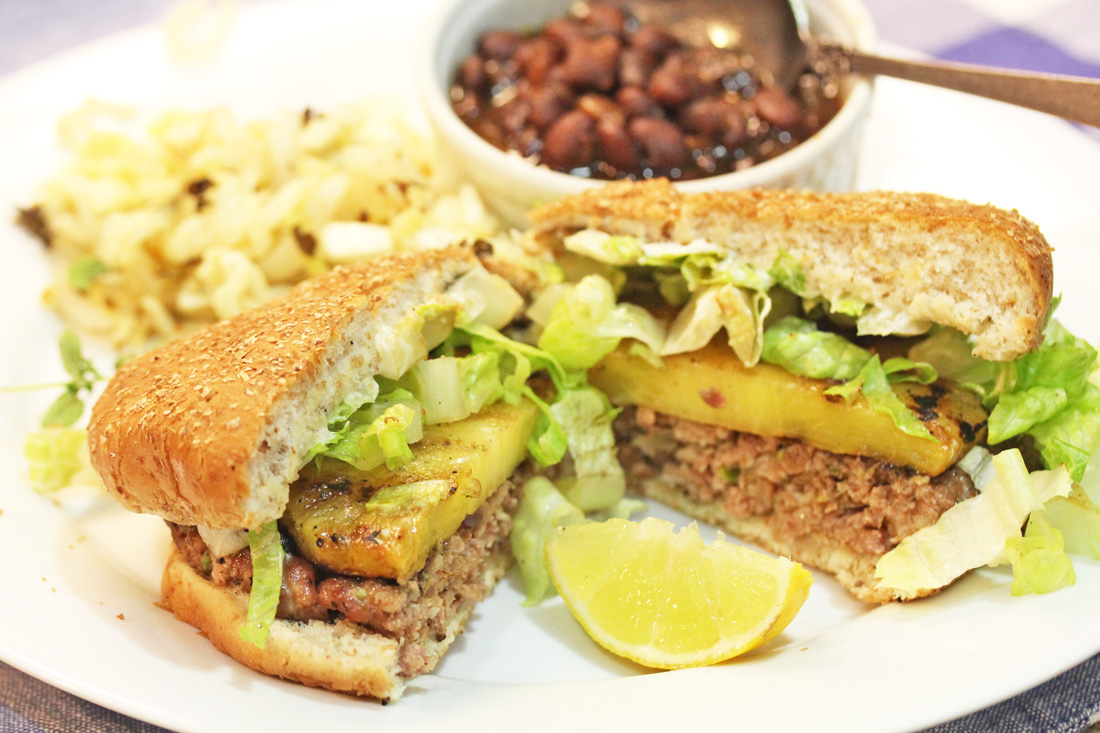

[…] Dice onion, slice mushrooms, slice prosciutto, mince herbs and measure ingredients. A word about chicken broth. In this recipe, I’ve used the liquid remaining from the mushroom soaking and then added […]
[…] Vegetable Stock Take a look at my turkey stock post to learn how easy it is to […]
[…] featured a variety of soups in our Soup class. We learned to make fresh made vegetable stock which was the basis for our soups. We made a pureed Carrot Ginger Soup, which is one of my […]
[…] for the day after, Turkey Stock made from turkey […]
[…] for the day after, Turkey Stock made from turkey […]
[…] our class we made fresh vegetable stock in one hour, but at home I had some frozen turkey stock which I used. Guess when I made that? If using fresh made unsalted stock, add 1/2 tsp salt when you add the stock and taste for […]
This is what I’m making tomorrow. Thanks for posting your recipe. It’s always fun to get someone else’s take on a basic recipe– so many variations. I like to add a sweet potato. And now you have reminded me to get some fresh herbs.
I love making stock. It’s comforting to have some stored in the freezer to create with! This is the recipe I learned in culinary school. It’s basic so that you can store the stock and add more individual flavors when you make your final sauce, soup or dish. Enjoy your “stock day or night”!
[…] Tablespoon vegetable oil 2 14 ounce can unsweetened coconut milk 2 cups low-sodium chicken broth or fresh-made chicken stock 1 1/2 pounds skinless, boneless chicken thighs, cut in bite-size pieces 4 Tablespoons fish sauce […]
Thank you for posting this stock recipe. I am making it today and the house smells wonderful!!
I made one slight modification. I am simmering it in my 6 quart slow cooker.
I love your recipes. They are easy to follow and presented such that even a novice cook can be successful.
What a great idea to put in a slow cooker, since it needs to cook slow anyway. I’m glad you are enjoying my recipes. Thanks Pat for the kind words and keep cooking wonderful dishes.